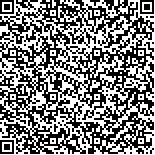下载中心
优秀审稿专家
优秀论文
相关链接
摘要

为了更好对城市生态质量进行监测和评价,构建一个更精确的城市遥感生态指数十分必要。本文结合绿度、湿度、干度、热度和空气质量指标采用主成分分析PCA(Principal Component Analysis) 构建改进型遥感生态指数MRSEI(Modified Remote Sensing Ecological Index);利用熵权法计算压力—状态—响应模型PSR (Pressure State Response Model)中各指标的权重,通过加权法获得生态环境指数EI(Eco-environmental Index)与MRSEI和RSEI进行比较。同时,综合绿度、热度、湿度、干度指标利用核主成分分析KPCA(Kernel Principal Component Analysis)构建非线性遥感生态指数NRSEI(Nonlinear Remote Sensing Ecological Index);最后将MRSEI、NRSEI分别与常用的遥感生态指数RSEI(Remote Sensing Ecological Index)进行对比和分析。结果表明,MRSEI可体现空气质量空间分布对城市生态质量的影响,2014年和2017年MRSEI与EI的相关系数分别是0.829和0.857(P<0.01),比RSEI与EI的相关系数分别提高0.035和0.055。在主城区MRSEI和RSEI与EI比较结果表明,MRSEI的平均绝对误差、均方根误差和平均相对误差均小于RSEI,表明MRSEI更适用于城市生态质量评价,空气质量指标对北京市生态环境监测、评价是非常重要的。同时,在实验区KPCA第一主成分贡献率比PCA提高了11.94%—21.45%;各个指标与NRSEI相关系数比与RSEI提高了0.128—0.198;NRSEI可体现生态等级间的过渡,RSEI对生态环境差的区域有时低估,对生态环境优的区域有时高估,NRSEI与遥感影像定性反映的生态状况更加相符。在监测空气质量严峻的北京市生态质量方面,MRSEI优于RSEI;顾及各指标间的弱线性或非线性问题的NRSEI监测生态环境质量效果优于利用线性变换的RSEI。
Establishing a more accurate remote sensing ecological index is necessary to evaluate urban ecological quality and provide timely warnings. Taking the Beijing city as the study area, this paper used five indices (vegetation index, humidity, Land Surface Temperature (LST), Normalized Difference Build-up and bare Soil Index (NDBSI) and air quality) through the Principal Component Analysis (PCA) method to construct a Modified Remote Sensing Ecological Index (MRSEI). The Eco-environment Index (EI) was derived from the Pressure-State-Response model (PSR) combined with the entropy weight method to compare with MRSEI and RSEI. Moreover, the nuclear principal component analysis (KPCA) was applied to establish the Nonlinear Remote Sensing Ecological Index (NRSEI), which was integrated vegetation index, humidity, LST, and NDBSI. Finally, MRSEI and NRSEI were separately compared with the remote sensing ecological index (RSEI). The results showed that MRSEI could reflect the spatial distribution of air quality, and the correlation coefficients between MRSEI and EI were 0.829 in 2014 and 0.857 in 2017 (P<0.01), which were improved by 0.035 and 0.055 over that of RSEI, respectively. Compared with EI, the average absolute error, root mean square error, and average relative error of MRSEI in the main districts were all lower than that of RSEI. These results indicated that the MRSEI in evaluating urban ecological quality was better than RSEI and the air quality indicator was feasible to monitor the ecological environment of Beijing. The contribution rate of the first principal component from NRSEI was increased by 11.94%—21.45% than that of RSEI in the experiment areas. Compared with RSEI, the correlation coefficients between each indicator and NRSEI increased by 0.128—0.198. NRSEI could demonstrate the transition of different ecological levels. RSEI sometimes underestimated the areas with poor ecological environments, and it sometimes overestimated the areas with excellent ecological environments. NRSEI was more consistent with the ecological conditions reflected by remotely sensed images. MRSEI is more suitable than RSEI for monitoring the ecological quality of Beijing. NRSEI, taking into account the weak linear or nonlinear correlations of various indicators, is better than RSEI in assessing the ecological environment quality.

